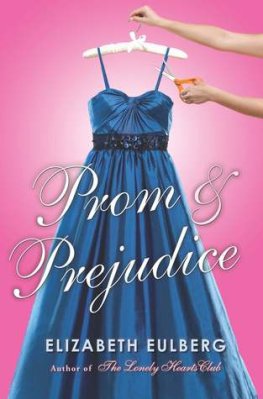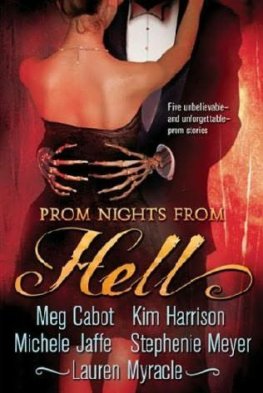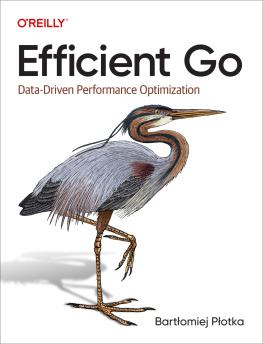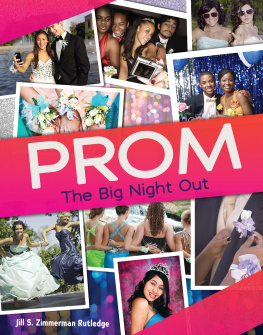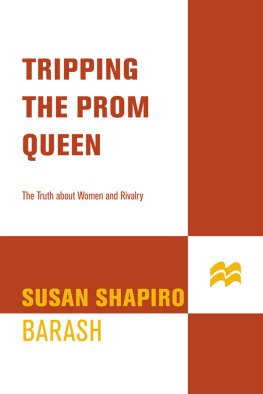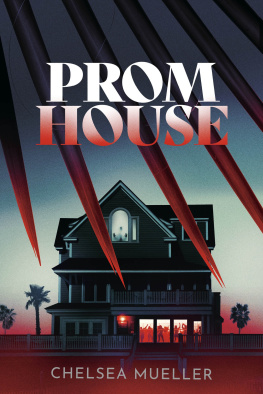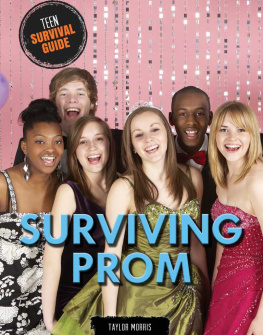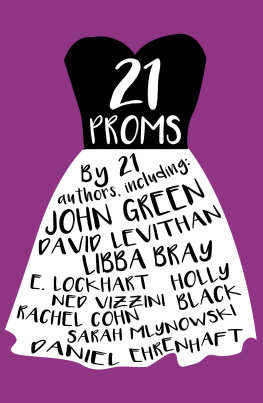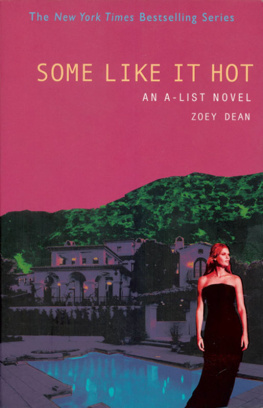Prom NIGHT
PromNIGHT
Youth, Schools, and Popular Culture
Amy L. Best
ROUTLEDGE
A member of the Taylor & Francis Group
New York & London
Published in 2000 by
Routledge
29 West 35th Street
New York, NY 10001
Published in Great Britain by
Routledge
11 New Fetter Lane
London EC4P4EE
Copyright 2000 by Routledge
Routledge is an imprint of the Taylor & Francis Group.
This edition published in the Taylor & Francis e-Library, 2002.
All rights reserved. No part of this book may be reprinted or reproduced or utilized in any for or by any electronic, mechanical, or other means, now known or hereafter invented, including photocopying and recording or in any information storage or retrieval system, without permission in writing from the publishers.
Library of Congress Cataloging-in-Publication Data
Best, Amy L., 1970
Prom night: youth, schools, and popular culture/Amy L. Best.
p. cm.
ISBN 0-415-92427-8ISBN 0-415-92428-6 (pbk.)
1. PromsSocial AspectsUnited States. 2. Proms United StatesHistory20th century. 3. High school studentsUnited StatesSocial life and customs20th century. I. Title.
GV1746.B49 2000
394.3-dc21 00-041505
ISBN 0-203-90516-4 Master e-book ISBN
ISBN 0-203-90609-8 (Adobe eReader Format)
ISBN 0-415-92428-6 (Print Edition)
For my grandmother
Helene Delano Holland
Popular culture is made by the people, not produced
by the culture industry. All the culture industries
can do is produce a repertoire of texts or cultural
resources for the various formations of the people to
use or reject in the ongoing process of producing
their popular culture.
John Fiske, Reading the Popular
Acknowledgments

Attending high school as a white middle-class girl in a predominately white, largely upper-middle-class suburban community, I experienced a strange blending of privilege and powerlessness. My being white and middle-class resolutely gave me certain advantages and a sense of power that now as an adult often make me feel more than a little uneasy. Yet, it is unlikely that as a teenage girl I would ever have felt the sense of mightiness I felt had I not had a group of girlfriends who always inspired me by their collective sense of possibility. For friendships that have carried me into my adulthood I am grateful to MaryBeth Ihnken,Jodi (Cohen) Vince, Doc (Kriegsmann) Leddy, Jill Garner, Jiffy (Kriegsmann) Cassolini, Abby Chickering, Lisa (Brady) Maurer, and Karin (Helland) Farrell. You have shaped this book in ways that I could never fully explain. I also feel extraordinarily indebted to my family, particularly my parents, Natalie Best and Gary Best, and my sister, Christine Best, for believing in this project and, most importantly, in me.
This book is based on research I began as a graduate student. As such, many thanks are due to those who helped shape this project and my development as a sociologist. Thank you to Judith Barker, Jim Rothenberg, and Mike Yarrow, professors at Ithaca College, who challenged me in ways that changed my life. The environment at Syracuse University, where I studied as a graduate student, was also an intellectually supportive one. Especially, I would like to thank Judy Long, Sari Knopp Biklen, Marj DeVault, Julia Loughlin, and Rosaria Champagne, without whom this project would have never gotten off the ground or grown in the way it did. Without the critical push from Sari Knopp Biklen, it is unlikely I would ever have taken up such a project as a theoretical one. Her careful reading of this manuscript as it neared its completion provided me with much insight. Marj DeVault shaped my understanding of the methodological possibilities in countless ways. I feel especially lucky for having worked with Judy Long, my friend and thesis advisor, whose lifelong work as a feminist scholar helped carve out a space for a feminist sociologist like me to be institutionally supported. I am without words to express the extent of my gratitude, inspiration, and admiration.
To Leslie Bogad, whose critical insights contributed centrally to this becoming a book, and to the Popular Culture Institute at Syracuse University for its members' spirited and lively conversation, I am deeply indebted. lan Lapp, Robin Riley, and Brenda Solomon, among so many others, were three with whom I always relished the chance to talk. Additionally I would like to extend my thanks to Michelle Fine, for her comments on this project in its early stages, and to Amy Holzgang for her reading in its final stages. The sociology department at San Jose State University was particularly supportive as I worked to finish this book. A debt of gratitude goes to the School of Social Sciences at San Jose State University for their support during the last legs of this project. I am most grateful for the extensive comments from my editor, Ilene Kalish. Her suggestions were so critical and significant, I shall never underestimate the depths of her knowing, and her uncompromising sense of staying true to this project. I would be remiss if I were not to thank the kids I interviewed, for rearranging their schedules and letting me listen to what they had to say so that I could complete this project. A special thank you to Erika Lovette for providing me with muchneeded photographs.
The loving support I received daily from my partner, Chris McCauley, was priceless. I am especially beholden for the various ways he believed in me and my work, and for his exhaustive efforts to create a space in which I could work. For helping me along the way for what has seemed a lifetime, what can I say?
O ne
Introduction
A Night to Remember
While I was researching this project, a student gave birth in a bathroom stall at her high school prom. News coverage reported that after delivery she dropped the newborn into a garbage can and returned to the prom for one last dance. This became a major story headlining televised and print news reports. Yet the media fury was quickly followed by a succession of public judgments decrying that the character of our nation's youth had plummeted to the irretrievable depths of moral degeneracy. The irony of this event was difficult to miss. An event often upheld as a last preserve of adolescent innocence, the prom, collided with a morally charged and tension-laden issue, teenage pregnancyone celebrated, the other reviled. Further, the death of a newborn gave greater fuel to one of our nation's most recent media obsessions: senseless teen violence.
I first learned of this story not from the news, but from someone I worked with while living in NewYork City. It was such a bizarre story, fantastic in the true sense of the word, that I couldn't really believe it. But sure enough, when I returned home from work and turned on the news, there it was. For the next several days every time I turned on the television, updates of this story, termed the story of the prom mom in the popular press, were broadcast. That this girl was white, middle-class, and living in a suburb rather than urban, poor, or of color seems particularly relevant for understanding why this incident received so much attention. Since their development, the suburbs have been seen as spaces of shelter for white middle-class youth, insulating them from a Just as suburbia is constructed as a safe space, so is the suburban school. Perhaps there is no event that epitomizes this safety more than the prom. The prom traditionally has been thought of as a domain of frivolous adolescent fun: an event at which kids dress up, have their pictures taken, and dance the night away. We are constantly presented with images of the prom in which teenagers, usually white and middle-class, are engaged in such examples of good-natured fun.


